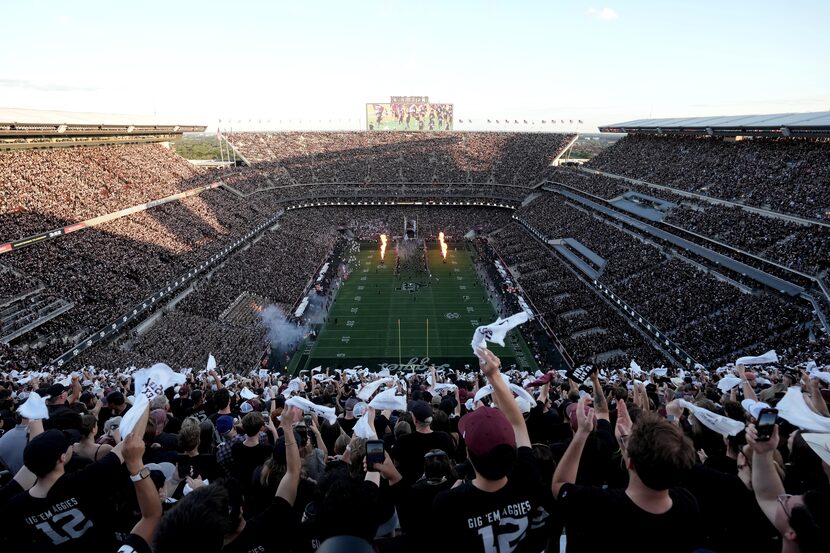Top Stories
Urgent: Private Equity Threatens College Sports Financial Stability

UPDATE: College sports face an urgent financial crisis as new regulations allow universities to directly pay athletes, creating a scramble for cash. The House v. NCAA settlement, effective since June, mandates that schools use their own funds to meet athlete compensation, potentially reaching a staggering $20 million annually per institution.
Despite the overall college athletics revenue soaring to $13.6 billion in 2022, many athletic departments are struggling with cash flow. As reported by Sports Illustrated, the combination of lavish facilities and soaring salaries has left schools desperate for new revenue streams, prompting private equity firms to step in with offers of upfront cash.
At a recent roundtable on the future of college basketball, NCAA President Charlie Baker warned schools about the risks of private equity involvement. “Be really careful,” he urged, signaling growing concern over potential pitfalls in these financial dealings.
Developments are moving fast, with reports that a proposed deal involving the Big Ten Conference could inject $2 billion into college athletics. Other conferences are also exploring similar arrangements. However, the pressure to fund athlete payments could push smaller colleges to the brink, risking their ability to field teams or maintain facilities. If schools fail to adapt, they may lose top athletes and fan support, further threatening revenue.
In Texas, leading universities like Texas A&M have been cautious about engaging with private equity. Earlier this year, Texas A&M and Playfly Sports secured a $515 million, 15-year multimedia rights partnership, including opportunities related to Name, Image, and Likeness (NIL). This strategic move demonstrates that well-funded institutions can still thrive without succumbing to private equity pressures.
However, maintaining a competitive edge will require more than just partnerships. As competition heats up from other Texas universities and across conferences, the urgency to innovate in funding is paramount. Traditional loans from banks may no longer suffice as schools grapple with the financial implications of direct athlete payments.
A shift towards private capital investment is being considered for financing projects like stadium renovations and new content studios. But the consequences of such deals could be dire, with potential increases in ticket prices and cuts to non-revenue sports programs looming on the horizon.
Instead of relying on private equity, a more sustainable model may emerge from the Green Bay Packers, which have successfully implemented fractional ownership. This approach allows universities to issue regulated securities to a broad base of alumni and fans, creating a new avenue for funding while maintaining operational control.
With passionate supporters eager to invest in their alma maters, this model could foster a deeper connection between fans and universities. Alumni and fans would gain financial stakes in their programs, strengthening loyalty and enhancing brand visibility.
As the landscape of college athletics evolves, the choice for athletic directors and university leaders is clear: they can pursue growth without sacrificing control. The urgency for innovative funding solutions is now, and the future of college sports hangs in the balance.
Next Steps: Watch for updates on how universities adapt to these financial pressures and the long-term implications of private equity involvement. The decisions made today will shape the future of college athletics and influence the experience of countless student-athletes and fans.
-

 Science2 weeks ago
Science2 weeks agoIROS 2025 to Showcase Cutting-Edge Robotics Innovations in China
-

 Politics2 weeks ago
Politics2 weeks agoJudge Considers Dismissal of Chelsea Housing Case Citing AI Flaws
-

 World2 weeks ago
World2 weeks agoBravo Company Veterans Honored with Bronze Medals After 56 Years
-

 Lifestyle2 weeks ago
Lifestyle2 weeks agoStone Island’s Logo Worn by Extremists Sparks Brand Dilemma
-

 Health2 weeks ago
Health2 weeks agoStartup Liberate Bio Secures $31 Million for Next-Gen Therapies
-

 Top Stories2 weeks ago
Top Stories2 weeks agoIndonesia Suspends 27,000 Bank Accounts in Online Gambling Crackdown
-

 Sports2 weeks ago
Sports2 weeks agoMel Kiper Jr. Reveals Top 25 Prospects for 2026 NFL Draft
-

 Health2 weeks ago
Health2 weeks agoTop Hyaluronic Acid Serums for Radiant Skin in 2025
-

 World2 weeks ago
World2 weeks agoHoneywell Predicts Record Demand for Business Jets Over Next Decade
-

 Sports2 weeks ago
Sports2 weeks agoYamamoto’s Mastery Leads Dodgers to 5-1 Victory in NLCS Game 2
-

 Politics2 weeks ago
Politics2 weeks agoNew Jersey Voters Urged to Register Ahead of November Election
-

 Lifestyle2 weeks ago
Lifestyle2 weeks agoMary Morgan Jackson Crowned Little Miss National Peanut Festival 2025








